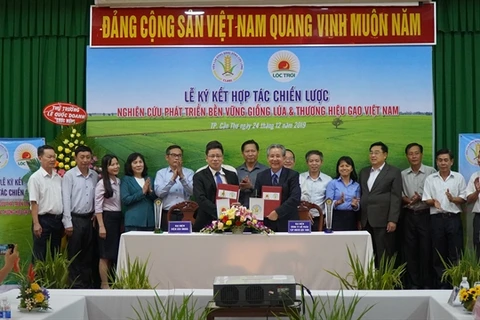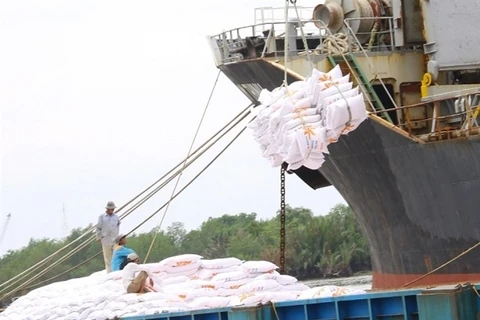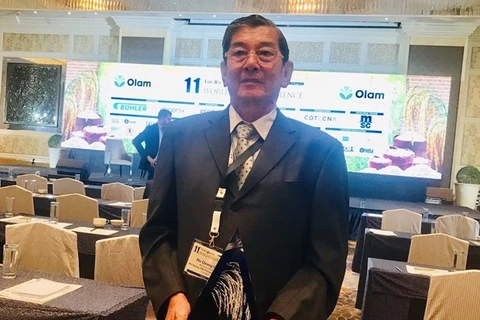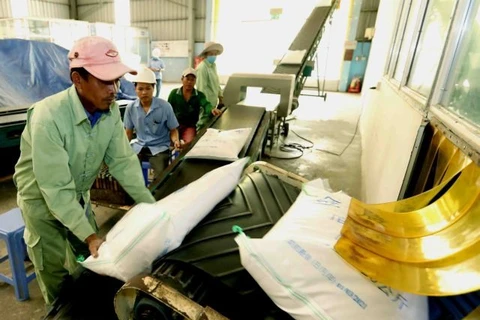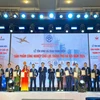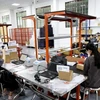Hanoi (VNS/VNA) - Vietnam exported 560,000 tonnes of rice in January 2020, earning 270.3 million USD, an increase of 12 percent in volume and 39 percent in value month-on-month, according to the General Department of Customs.
Exports rose by 28.1 percent in volume and 38.4 percent in value year-on-year.
Since the start of the winter-spring rice crop, domestic prices have remained stable while export volume has surged. Before the Tet festival, local businesses contracts to ship rice to the Philippines and Malaysia due to more competitive prices than other countries.
FOB (free on board) prices stand between 340 USD and 350 USD per tonne for five-per-cent-broken rice, falling 10-20 USD for 15-percent broken rice and 25-percent broken rice.
This year, the Philippines is expected to maintain its import volume, while the African market is forecast to purchase 1 million tonnes, followed by Malaysia at 500,000 tonnes.
The nation also exports from 300,000 to 400,000 tonnes to Cuba each year, while Iraq buys about 300,000 tonnes. China plans to buy 400,000 tonnes of local rice every year.
[Soc Trang’s rice variety recognised as best in world]
Bui Thi Thanh Tam, General Director of the Northern Food Corporation, said five years ago, China was the largest market for local rice but now Vietnam had expanded its export markets. This meant the coronavirus epidemic would not take a big hit on Vietnam's rice exports.
Do Ha Nam, Vice Chairman of the Vietnam Food Association, said China would continue to tighten rice imports this year, so the rice import quota from Vietnam would stay the same as last year.
However, Vietnam has a chance to boost its rice exports to Japan this year because it wants to diversify its rice import sources by seeking other suppliers from countries that have signed the Comprehensive and Progressive Agreement for Trans-Pacific Partnership (CPTPP), including Vietnam. At present, Japan depends on US rice supplies.
The Import-Export Department under the Ministry of Industry and Trade also said, besides allocating a quota of 20,000 tonnes of rice to all members of the World Trade Organisation (WTO) this year, the Republic of Korea had given a quota of 55,112 tonnes of rice for Vietnam, according to a multilateral agreement between the Republic of Korea and five WTO partners, including Australia, the US, China and Thailand.
To take this export opportunity, local exporters were looking for more information about the Korean market and the tariff quota mechanism to develop their production and business plans.
Nam said this year, Vietnam was forecast to export the same volume as 2019 or a slight increase.
However, drought and saline intrusion were likely to reduce rice output this year.
In addition, prices were also expected to decline due to lower demand on the world market, according to the Ministry of Agriculture and Rural Development. Many countries have been restructuring their agriculture sectors to move towards self-sufficiency.
Meanwhile, Vietnam now faces difficulties finding new rice markets.
Last year, Vietnam experienced a fall in rice export value of 10 percent to 2.76 billion USD but a surge of 3 percent in export volume to nearly 6.3 million tonnes. The main reason was falling global prices.
The Philippines was the largest export market for Vietnamese rice with a value of 885 million USD, a year-on-year rise of 92.58 percent, according to the General Department of Customs.
Markets with strong growth in rice export value included Senegal (98 percent), Ivory Coast (78.6 percent), Taiwan (31 percent), Hong Kong (28.3 percent) and Tanzania (26.6 percent).
Vietnam’s rice has been exported to 150 countries and territories around the world./.
VNA

